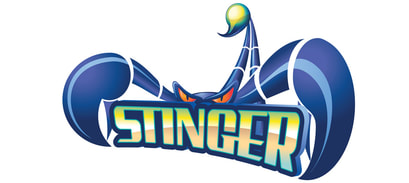Specific Type: Invertigo
|
A coaster company by the name of Vekoma Inc. introduced a ride in 1986 called Boomerang. The Boomerang was a production model for Vekoma which featured a compact layout composed of three twisting inversions first traveled forwards, then a second time in reverse. The coaster caught on and Vekoma was soon dishing the rides out almost as fast as they could come, with parks across the globe putting Vekoma in demand. A decade passed, and Vekoma - now one of the world's top ride-producing companies - was looking to create an updated version of the coaster that started it all. The answer was Invertigo, a taller, faster, longer and - most notably - inverted version of the Boomerang. The ride soon found homes at several parks looking for a new way to thrill guests, the first park in the United States being California's Great America of Santa Clara, California as Invertigo (now located at Dorney Park as Stinger) before being eclipsed by an even more extreme ride variation: the Super Invertigo. But, to this day, the Invertigo model remains a hit. Seated in face-to-face / back-to-back foot-dangling coaches, riders are swirled through a Vertical Loop and Cobra Roll at up to 55 miles per hour, with still the highest g-forces of any ride of its type being pulled on Stinger- 5.
The ride's run would end, however, at the end of the 2011 season at California's Great America. It was early on in the year, in late January, that officials from the park announced that the ride was being removed at the end of the season. Cedar Fair officials followed up the announcement by promising the park's fans that a new attraction would be taking the place of Invertigo, though those plans may have fallen through after Cedar Fair sold the park for $70 million near the end of the summer. It was promised, however, that the coaster would be moving to another Cedar Fair park, and in late August, it was announced that park would beDorney Park. In it's new home, the coaster would swap the well-known yellow and blue paint scheme for teal and blue, and the name was changed to the surprisingly unique, Stinger. Thirty-two thrill seekers first board the train after choosing whether to face forwards or backwards for the first leg of the course. Face-to-face / back-to-back seating loaded, the train pulls out of the station and up a steep first lift to a maximum of 137 feet high at the top end of the train. After a momentary pause, the direction reverses and the train falls back down, gaining 55 MPH by the bottom. Speeding through the station straightaway, riders enter the Cobra Roll and fly upwards; flipping over the first half with a Sidewinder maneuver, leveling, and then taking on the second 90-degree inversion in reverse order. Reaching the bottom, passengers are then flung upwards again with the traditional up-and-over leg-flinging action. The yellow rails head upwards again and the speed wears off before the ride engages on a second chain to tow the train up a second 14-story slope meeting the first at the top. The chain releases and the speed is once again unleashed as Stinger plunges to the ground at breakneck speed. The train is whipped over the loop again, this time with the full five g's being pulled, then the Cobra Roll inverts the train twice more and sends the coaster back through the station. Flying back up the first ascent, the speed wears out and riders are lowered back into the station. |
©1998-2016 COASTER-net.com, All Rights Reserved.


